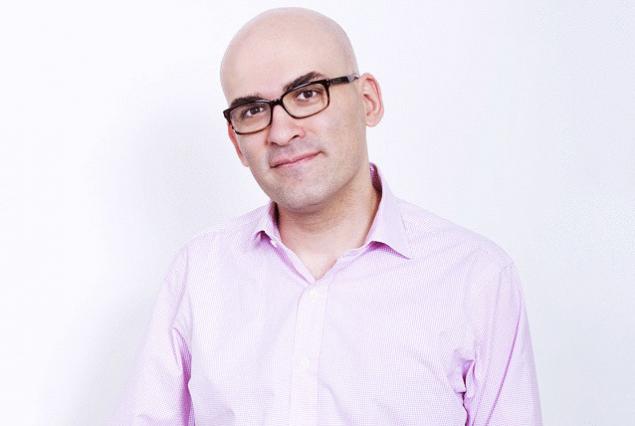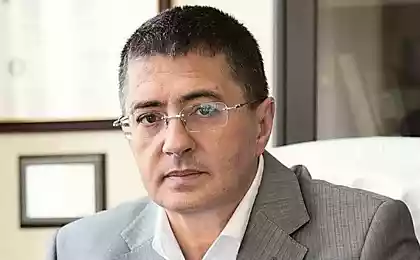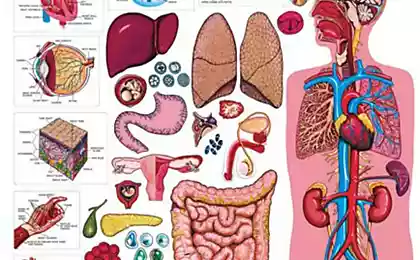475
The exposure from Dr. Irakli Batiashvili working in new York: 5 purely Russian disease

фото:snob.ru Wonderful article Dr. Irakli Batiashvili working in new York. He made a list of the five illnesses known only to Russian patients and doctors:
Five purely Russian disease
Still in Russian medical practice there are a number of diseases that doctors in other parts of the world do not suspect, and certainly they are not treated
The Soviet Union is long dead, and the disease that he left behind a legacy of Russian medicine, are still alive. As a result, one and the same person can receive in the United States and Russia is completely different diagnoses: for example, in America he will say that he is healthy and in the Russian clinic will be that he will have a long and painful treatment.
1.Vegetovascular dystonia (VVD). The "Queen" of all native Russian, or rather Soviet diseases, because this "beast" is found not only in Russia but throughout the former Soviet Union (by the way, the pages on VSD in Russian Wikipedia, there is no equivalent in any other language except Ukrainian). The Bane of many women of our country at the age from 16 to 50 (Yes, a "disease" three times more often diagnosed in women), the diagnosis for which you can blame the absence of physical education in high school at the age of 17, having a nervous breakdown after an argument with her husband in 30 or Blues and "tingling in the heart" when problems at work in 45. As pointed out by different Russian sources (in fact, they only are available), cause and mechanism of development of "disease" has not been fully established and includes a number of changes affecting all body systems, from cardiovascular and endocrine to the nervous and digestive (the list of systems is not limited to this). Manifestations of ESP are vast and defy description — from dizziness and cold hands and palpitations, sweating and pains in the heart area. Say, there are also nausea, vomiting, and even swelling of the legs — so what is harmful cannot be... If you try to find a common equivalent of "disease" in the world literature, you get something between a panic attack and "hysteria" — anxiety state, manifested in various somatic disorders.2. Erosion of the cervix. If VVD is a purely Russian phenomenon, erosion is least present as a fact in English literature called "cervical ectopia" — a normal phenomenon in which the mucosa of the cervical canal sometimes goes to the external (vaginal) part. The difference between "our" and "Nenashev" doctors is in the approach to ectopia: according to the majority of gynecological recommendations, the treatment of erosion is not required if it does not cause any inconvenience. In Russia until recent time, erosion wore endemic in the form of burning, cold, laser and all sorts of drugs. Came to surgical resection.
3. Dysbacteriosis (dysbiosis). This ominous term usually referred to the mysterious "violation of the microflora" of the intestine or skin, often after taking antibiotics. It should be noted that, although the English-language literature recognizes the possibility of development of dysbiosis, which appears life-threatening infections (e.g., pseudomembranous colitis), the frequency is disproportionately lower than that with which the disease is diagnosed in Russia. And it is quite offensive wording in the article already referred to English Wikipedia about dysbiosis: dysbiosis is actual a rare condition, however, in Russia and ex-USSR countries this diagnosis is falsely used by scammers to sell "cures" for what they regard as dysbiosis.
4. Osteochondrosis and salt deposition. If the IRR is the Queen of "our" disease, "acute chondrosis" (as it is sometimes called the older generation) can rightly be called "king". I must admit, and I with back pain no-no, and think, and not whether it is osteoarthritis, but then you get lost because you don't know what to do with it. Actually "Russian" low back pain has nothing to do with the fact that the term osteochondrosis is referred to in English literature — a few rare and well-defined diseases. With "deposition of salts" at all confusing — I think this phrase is a little and osteoarthritis, and gout, in which, in fact, the salt of uric acid deposited in the joints and soft tissues.
5. Vitamin deficiency and immunodeficiency. Rounding out the hit parade for two problems commonly found in the Russian man in late winter — early spring. It is believed that the body is weakened after long periods of cold weather, and therefore needs the support of the immune system all vitamins, interferons (he dripped in the nose in childhood), "immunology" and biologically active additives. Don't get me wrong, in America and Europe also found and avitaminosis (deficiency of a vitamin), and immunodeficiency (weakened immune system, caused by either a primary defect or a secondary disorder caused systemic disease), but they occur not during the April thaw, as we do, and as a result clearly described diseases. For example, deficiency of vitamin C, which spring without any symptoms reveal every second in Russia, is called "scurvy" and manifests have long described the symptoms. We all remember the horror stories about bleeding gums the polar explorers in the nineteenth century."
The end of the article Irakli Batiashvili
Source: psi2009.livejournal.com/94007.html
4 tips on healthy eating from Rumi Neely
How to look like the bodies of athletes of different sports























